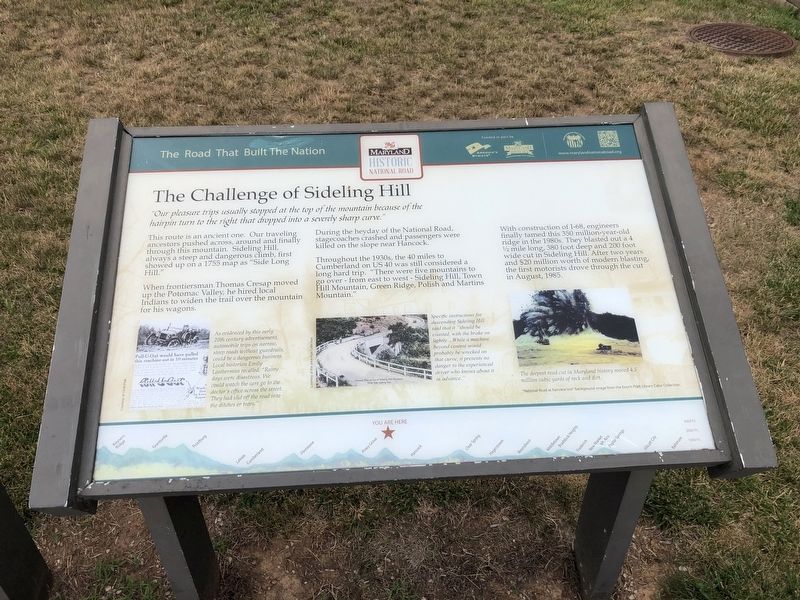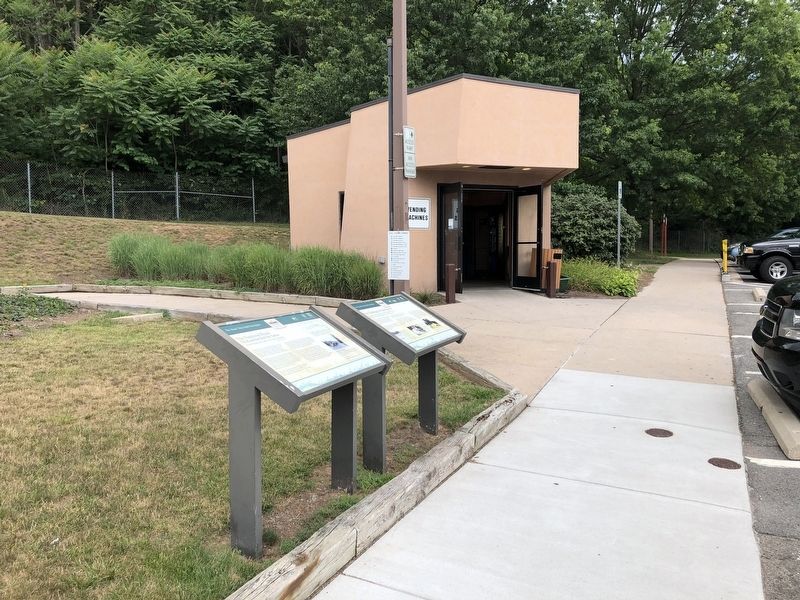Near Hancock in Washington County, Maryland — The American Northeast (Mid-Atlantic)
The Challenge of Sideling Hill
— The Road That Built The Nation —
“Our pleasure trips usually stopped at the top of the mountain because of the hairpin turn to the right that dropped into a severely sharp curve.”
This route is an ancient one. Our traveling ancestors pushed across, around and finally through this mountain. Sideling Hill, always a steep and dangerous climb, first showed up on a 1755 map as “Side Long Hill.”
When frontiersman Thomas Cresap moved up the Potomac Valley, he hired local Indians to widen the trail over the mountain for his wagons.
During the heyday of the National Road, stagecoaches crashed and passengers were killed on the slope near Hancock.
Throughout the 1930s, the 40 miles to Cumberland on US 40 was still considered a long hard trip. “There were five mountains to go over - from east to west - Sideling Hill, Town Hill Mountain, Green Ridge, Polish and Martins Mountain.”
With construction of I-68, engineers finally tamed this 350 million-year-old ridge in the 1980s. They blasted out a 4˝ mile long, 380 foot deep and 200 foot wide cut in Sideling Hill. After two years and $20 million worth of modern blasting, the first motorists drove through the cut in August, 1985.
[Sidebars:]
As evidenced by this early 20th century advertisement, automobile trips on narrow, steep roads without guardrails, could be a dangerous business. Local historian Emily Leatherman recalled, “Rainy days were disastrous. We could watch the cars go to the doctor’s office across the street. They had slid off the road into the ditches or trees.”
The deepest road cut in Maryland history moved 4.5 million cubic yards of rock and dirt.
Erected by America's Byways; Maryland Heritage Areas Authority; Maryland National Road Association.
Topics and series. This historical marker is listed in these topic lists: Native Americans • Roads & Vehicles • Settlements & Settlers. In addition, it is included in the The Historic National Road series list. A significant historical month for this entry is August 1985.
Location. 39° 43.128′ N, 78° 16.838′ W. Marker is near Hancock, Maryland, in Washington County. Marker is on National Freeway (Interstate 68 at milepost 77) west of Western Pike (Maryland Route 144) when traveling west. Touch for map. Marker is in this post office area: Hancock MD 21750, United States of America. Touch for directions.
Other nearby markers. At least 8 other markers are within 4 miles of this marker, measured as the crow flies. The National Road (here, next to this marker); Gettysburg Campaign (a few steps from this marker); Sideling Hill Cut South Bench (within shouting distance of this marker); Interstate 68 Maryland Vietnam Memorial
Related marker. Click here for another marker that is related to this marker. This marker has replaced the linked marker.
Credits. This page was last revised on March 24, 2024. It was originally submitted on March 24, 2024, by Devry Becker Jones of Washington, District of Columbia. This page has been viewed 61 times since then. Photos: 1, 2. submitted on July 14, 2020, by Devry Becker Jones of Washington, District of Columbia.

